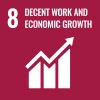Economic activity in the world economy remains lacklustre, with little prospect for a turnaround in 2016, says UN DESA’s World Economic Situation and Prospects as of mid-2016 report, launched today. According to the report, world gross product will grow by just 2.4 per cent in 2016, the same pace as in 2015, marking a downward revision of 0.5 percentage points from UN forecasts released in December 2015.
Persistent weakness in aggregate demand in developed economies remains a drag on global growth, while low commodity prices, mounting fiscal and current account imbalances and policy tightening have further dampened prospects for many commodity-exporting economies in Africa, the Commonwealth of Independent States and Latin America and the Caribbean. This has been compounded by severe weather-related shocks, political challenges and large capital outflows in many developing regions.
reportsLaunching the mid-year report at United Nations Headquarters in New York, Lenni Montiel, Assistant Secretary-General in the United Nations Department of Economic and Social Affairs (DESA) said, “The report underscores the need for a more balanced policy mix to rejuvenate global growth and create an enabling environment to achieve the 2030 Agenda for Sustainable Development.”
The report further highlights the prolonged economic downturns in Brazil and the Russian Federation, with significant regional spillovers. In the Russian Federation, GDP is forecast to contract by 1.9 per cent in 2016, due to fiscal tightening, further declines in private consumption and investment, and continuing international sanctions. In Brazil, a contraction of 3.4 per cent is projected, reflecting a deepening political crisis, rising inflation, a surging fiscal deficit and high interest rates.
GDP growth in the least developed countries is forecast to reach just 4.8 per cent in 2016 and 5.5 per cent in 2017, well below the Sustainable Development Goal target of “at least 7 per cent GDP growth”. This may put at risk much needed public spending on education, health and climate change adaptation, as well as progress in poverty reduction. In per capita terms, the slowdown in GDP growth in many developing regions is particularly stark. In Africa, GDP per capita growth is expected to average just 0.4 per cent during 2015-2017.
On the positive side, global energy-related carbon emissions remained flat in 2015, suggesting a potential delinking of economic growth and carbon emissions growth as highlighted in World Economic Situation and Prospects 2016. Investments in renewable energy sources reached a new record in 2015, mainly due to increased commitments and policy support in many developing countries.
Global growth is projected to rise marginally to just 2.8 per cent in 2017, remaining well below pre-crisis trends. The protracted period of slow productivity growth and feeble investment weigh on the longer-term potential of the global economy.
The report warns that downside risks to the global economy remain elevated. Large developing economies remain prone to capital flow volatility and exchange rate pressures, which may intensify in response to a widening divergence in global interest rates, while a further deterioration of commodity prices could exacerbate debt-service burdens of certain commodity-dependent economies. Greater policy coordination among countries can mitigate the negative spillover effects of policy misalignment and contain financial market volatility, the report noted.
Looking ahead, the report advocates that governments should fully and effectively utilize available fiscal space, while broadening the tax base, strengthening tax administration and increasing compliances in many developing and transition economies.
 Welcome to the United Nations
Welcome to the United Nations

